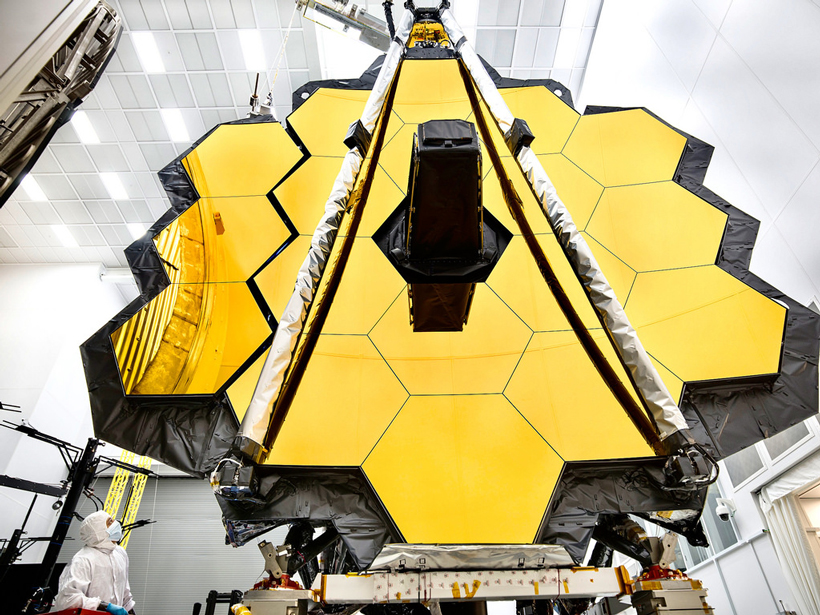President Donald Trump’s fiscal year (FY) 2018 budget proposal for NASA gives planetary science a boost while significantly cutting Earth sciences and outright eliminating NASA’s Office of Education. Despite these cuts, the overall $19.092 billion budget request for the space agency, announced on 23 May, dips only about 3% below the $19.653 billion allocated to NASA in FY 2017 under a recent spending law.
Planetary sciences would receive $1.93 billion in FY 2018—the division’s highest ever budget—with funding going toward Mars exploration, the Europa Clipper mission, and the recently selected Lucy and Psyche missions, which will explore asteroids (see Table 1). This record funding will support two Mars missions—Interior Exploration Using Seismic Investigations, Geodesy and Heat Transport (InSight) and the Mars 2020 rover—as well as the James Webb Space Telescope (JWST), slated to launch in October 2018.
(Because the federal budget for the current fiscal year (2017) was so recently signed into law, officials at NASA and other agencies say their staffs haven’t yet determined current funding levels for many of their programs and bureaus. Consequently, Eos has turned to analyses of the NASA FY 2017 budget by The Planetary Society to make the comparisons in this article between spending levels proposed for the 2018 fiscal year, which begins 1 October, and spending levels currently in effect.)
| Table 1. Proposed Budget for NASA for FY 2018a | ||||
| Program | FY 2017 Spending Lawb | FY 2018 Budget Requestb | Changeb | Percentage Change |
| Overall NASA | 19,653 | 19,092 | −561 | −2.9 |
| Earth Science | 1921 | 1754 | −167 | −8.7 |
| Planetary Science | 1846 | 1930 | 84 | 4.6 |
| Exploration Systems Development | 3929 | 3584 | 345 | −8.8 |
| Orion | 1350 | 1186 | −164 | −12.1 |
| Space Launch System | 2150 | 1938 | −212 | −9.9 |
| aSources: NASA, “FY 2018 Budget Estimates”; The Planetary Society; American Geophysical Union Public Affairs Department analysis.
bIn millions of U.S. dollars, rounded to the nearest million. |
“American footprints on distant worlds are not too big a dream.”
In a statement about the NASA budget rollout last week, NASA’s acting administrator Robert Lightfoot said that “American footprints on distant worlds are not too big a dream. NASA is executing programs step by step to make this dream a reality, as well as the broader quest to explore and understand the universe.”
The requested planetary science budget keeps NASA on track to select the next expedition of the New Frontiers program, which, with missions like New Horizons and Juno, seeks to tackle specific exploration goals in the solar system. The budget plan will also continue research on space weather and heliophysics and help fund a future telescope called the Wide Field Infrared Survey Telescope, which will eventually succeed JWST.
Earth Research Cuts
Although planetary sciences are slated for a boost, NASA Earth sciences took a hit with a requested FY 2018 budget of $1.75 billion, an almost 9% loss from the $1.92 billion allocated under the FY 2017 spending law. Because of the proposed funding drop, the agency may cancel five Earth science missions, including the Orbiting Carbon Observatory 3 (OCO-3), aimed to improve the observation of carbon dioxide in Earth’s atmosphere, and other satellite missions to observe climate and ocean systems. The other Earth science missions facing potential cancellation include the Deep Space Climate Observatory (DSCOVR) Earth-viewing instrument (launched in 2015) and the not-yet-launched Plankton, Aerosol, Cloud, ocean Ecosystem (PACE) satellite, Climate Absolute Radiance and Refractivity Observatory Pathfinder (CLARREO) satellite, and the Radiation Budget Instrument.
The budget “still includes significant Earth science efforts, including 18 Earth-observing missions.”
OCO-3 would complement the Orbiting Carbon Observatory 2 mission, which helps scientists track carbon dioxide emissions from space. OCO-2 allows researchers to pinpoint where carbon dioxide emissions emerge—down to individual power plants—and where natural processes sequester the gas, Chris O’Dell, an atmospheric scientist at Colorado State University in Fort Collins, told Eos. OCO-3, which would be affixed to the International Space Station (ISS), would carry better mapping tools and provide more comprehensive data about the global pattern of carbon dioxide sources and sinks. “Because the core instrument of OCO-3 is already built, and the modifications for it to go on the ISS [are] nearly complete, the amount of money actually saved by canceling the program is relatively minor,” he added.
Lightfoot said that despite the cuts to Earth science, the budget “still includes significant Earth science efforts, including 18 Earth-observing missions in space as well as airborne missions.”
Other Highlights
Under the Trump administration proposal, NASA’s Office of Education, which helps to coordinate outreach efforts to attract more students and institutions to NASA research opportunities, faces elimination, with $37 million set aside for transitional and closing costs.
The 2018 proposed FY budget also cancels the Asteroid Redirect Mission, which would have grabbed a chunk of an asteroid and inserted it into the Moon’s orbit for study.
A $345 million cutback to the agency’s Exploration Systems Development program (see Table 1) is aimed largely at the Orion crewed spacecraft as well as the rocket that will carry it, known as the Space Launch System, or SLS. The FY 2018 proposal allots $1.186 billion to Orion and $1.938 billion to the SLS, whereas the FY 2017 funding law allocated $1.350 billion and $2.150 billion, respectively, to these programs. A Planetary Society blog post notes, however, that Congress has in the past “increased these initial numbers” after prior proposed reductions.
—JoAnna Wendel (@JoAnnaScience), Staff Writer
Citation:
Wendel, J. (2017), Planetary science up, Earth science down in proposed NASA budget, Eos, 98, https://doi.org/10.1029/2017EO075211. Published on 02 June 2017.
Text © 2017. The authors. CC BY-NC-ND 3.0
Except where otherwise noted, images are subject to copyright. Any reuse without express permission from the copyright owner is prohibited.

